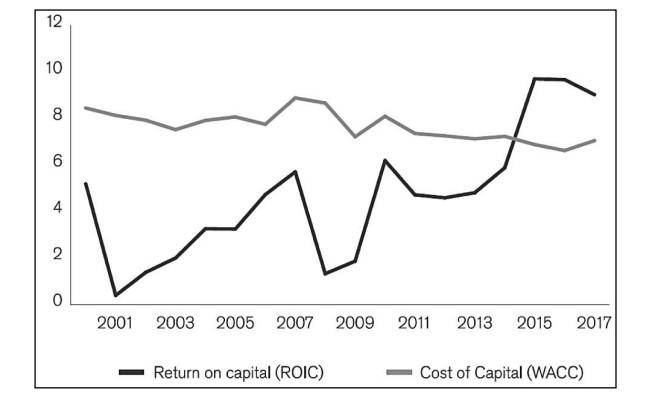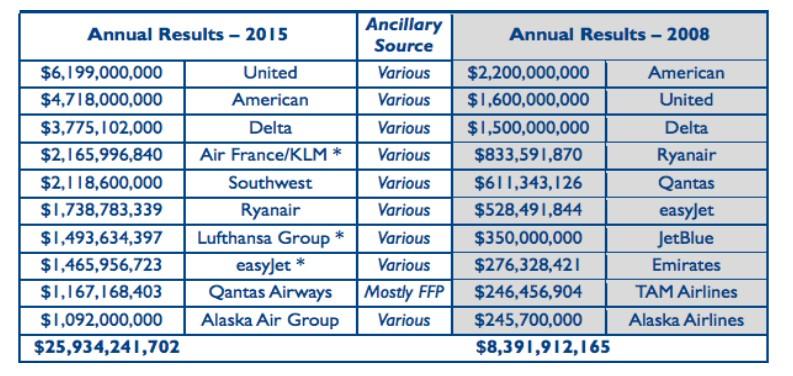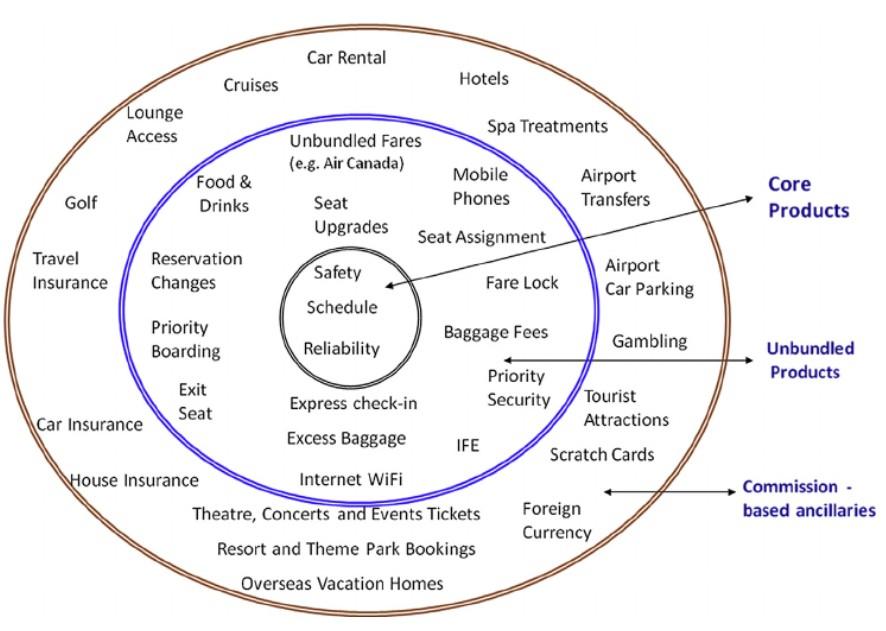Introduction
The aviation industry is an integral element of modern society because it allows people to travel long distances within short periods of time. Figure 1 by Babić, Ban, and Bajić (2019, p. 133) demonstrates that the economic area is profitable because it keeps receiving a rather attractive return on capital. This indicator can be associated with a rising number of passengers, but it is also reasonable to admit the role of ancillary services. They stand for any additional services that clients can request to sophisticate their flight experience and travel with a higher pleasure. In fact, airlines earn billions of dollars from these activities that include restaurants, rental cars, hotels, and other opportunities.

Ancillary Revenue Volume
To begin with, one should explain that airlines make huge revenues from ancillary services. Figure 2 (Shaw et al., 2021, p. 101936) reveals ten airlines that manage to earn the highest amount of money on the selected activities. The visual demonstrates that the organizations managed to increase their volumes significantly over seven years from 2008 to 2015. In addition to that, Figure 3 (Babić, Ban, and Bajić, 2019, p. 138) supports the claim above and represent the overall ancillary revenues that airlines manage to generate annually. This data depicts that the aviation industry kept receiving growing profits every year during 2007-2017. Even though the COVID-19 pandemic and associated interventions to stop the spread of disease limited people’s ability to travel and cut airlines’ revenues, it is still possible to state that airlines benefit from ancillary activities. That is why it is reasonable to offer detailed comments on what services allow companies in the aviation industry to obtain such significant financial rewards.


Ancillary Revenue Sources
It is rational to admit that ancillary revenues come from multiple sources, and their shared goal is to provide passengers with additional comfort. For example, these services include restaurants, car rent, better seats on a plane, insurance opportunities, and many other options (Bildea and Gorin, 2018, p. 102). Bozogáň and Hurná (2018, p. 73) stipulate that airline companies manage to obtain higher profits by providing their customers with innovative solutions regarding baggage tracking and sorting. Various insurance options should also be considered because they represent a significant part of the issue under analysis (Klislinar and Widjaja, 2020, p. 1215). In fact, Figure 4 (Shaw et al., 2021, p. 101936) reveals that it is possible to divide all the ancillary offerings into three groups, including core products, unbundled products, and commission-based ancillaries. Their shared feature is that airlines offer them in addition to their primary service of allowing people to travel.

Conclusion
The paper has demonstrated that airlines earn enormous revenues from ancillary activities. These organizations provide people with opportunities to purchase additional services and products to make their journeys more comfortable and delightful. Even though these offerings are optional, they account for a significant part of the airlines’ profits. The identified data has demonstrated that these organizations manage to receive billions of dollars from ancillary revenues. For example, United Airlines received almost $6.2 billion from these activities. In fact, airlines earn money when individuals attend airport restaurants, book better seats, purchase insurance, and request other similar services. All this information allows one to understand why airlines keep making sufficient efforts to develop their ancillary services and make them more available to a higher number of passengers.
Reference List
Babić, R. Š., Ban, M. O. and Bajić, J. (2019) ‘A review of recent trends in airline ancillary revenues’, Emc Review-Časopis Za Ekonomiju, 17(1), pp. 132-151.
Bildea, T. S. and Gorin, T. (2018) ‘Towards capturing ancillary revenue via unbundling and cross-selling’, Journal of Revenue and Pricing Management, 17(2), pp. 102-114.
Bozogáň, M. and Hurná, S. (2018) ‘Use of modern technologies at baggage tracking and its impact on airline revenue’, EAI International Conference on Smart Cities within SmartCity360° Summit, pp. 73-111.
Klislinar, E. and Widjaja, A. W. (2020) ‘Analysis of willingness to pay for ancillary revenue of full service airline (the case of Garuda Indonesia)’, KnE Social Sciences, pp. 1213-1230.
Shaw, M. et al. (2021) ‘Third party ancillary revenues in the airline sector: an exploratory study’, Journal of Air Transport Management, 90, p. 101936.